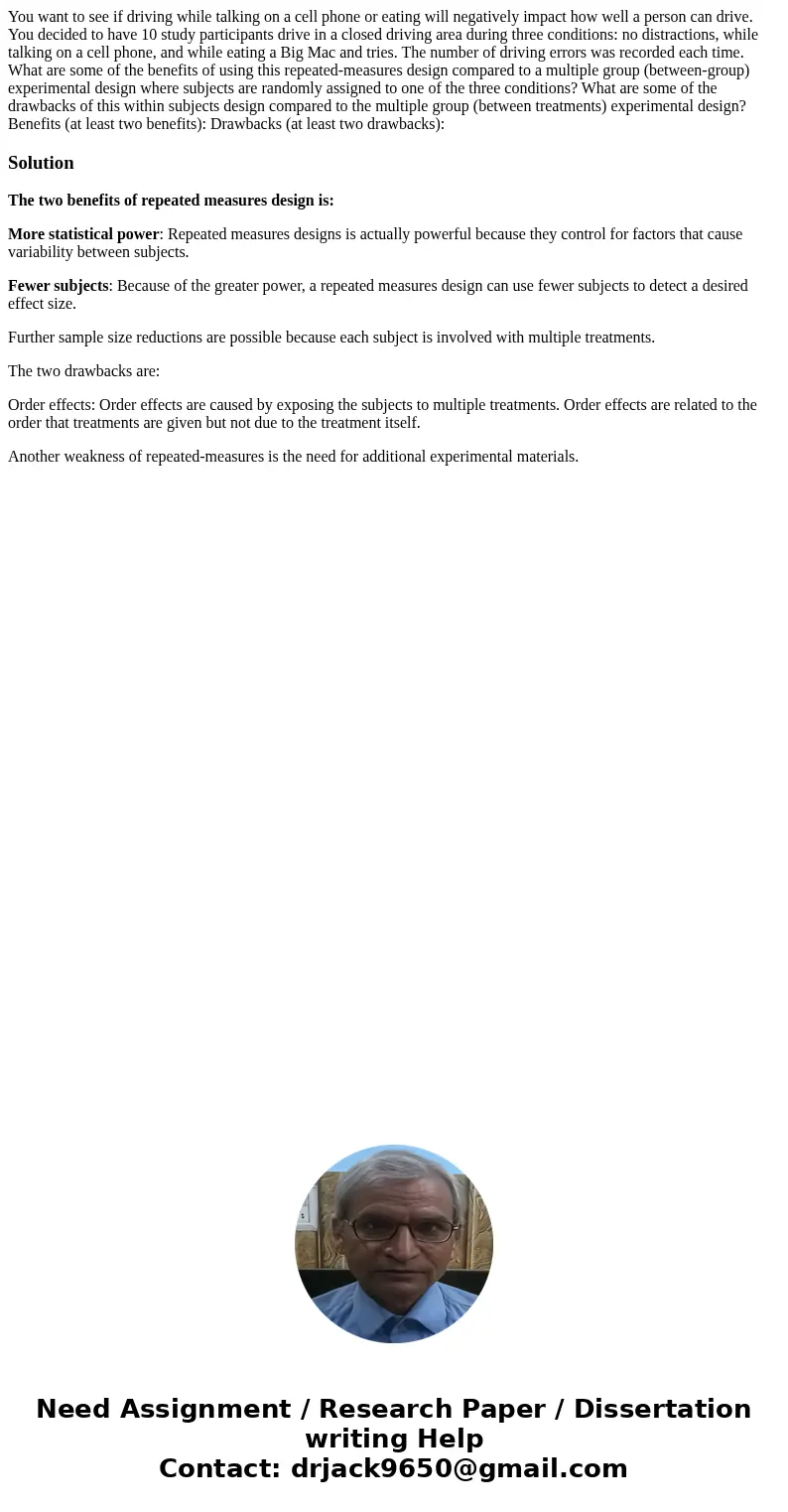You want to see if driving while talking on a cell phone or
You want to see if driving while talking on a cell phone or eating will negatively impact how well a person can drive. You decided to have 10 study participants drive in a closed driving area during three conditions: no distractions, while talking on a cell phone, and while eating a Big Mac and tries. The number of driving errors was recorded each time. What are some of the benefits of using this repeated-measures design compared to a multiple group (between-group) experimental design where subjects are randomly assigned to one of the three conditions? What are some of the drawbacks of this within subjects design compared to the multiple group (between treatments) experimental design? Benefits (at least two benefits): Drawbacks (at least two drawbacks):
Solution
The two benefits of repeated measures design is:
More statistical power: Repeated measures designs is actually powerful because they control for factors that cause variability between subjects.
Fewer subjects: Because of the greater power, a repeated measures design can use fewer subjects to detect a desired effect size.
Further sample size reductions are possible because each subject is involved with multiple treatments.
The two drawbacks are:
Order effects: Order effects are caused by exposing the subjects to multiple treatments. Order effects are related to the order that treatments are given but not due to the treatment itself.
Another weakness of repeated-measures is the need for additional experimental materials.

 Homework Sourse
Homework Sourse